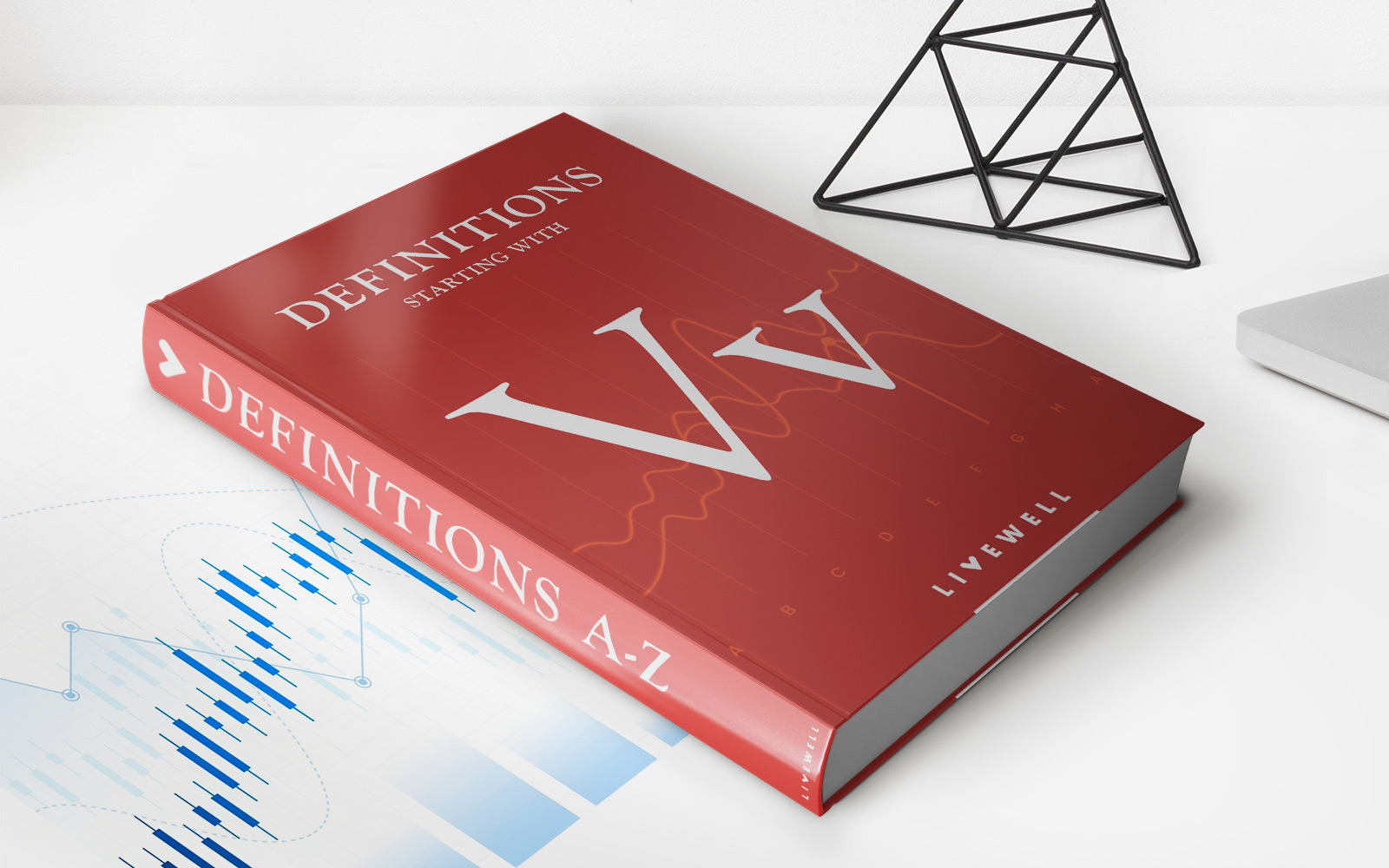Home>Finance>What Does The Face Value Of Life Insurance Mean?


Finance
What Does The Face Value Of Life Insurance Mean?
Modified: February 21, 2024
Discover the true meaning of the face value in life insurance and how it impacts your financial future. Gain insights into the finance aspect of life insurance and make informed decisions for your financial well-being.
(Many of the links in this article redirect to a specific reviewed product. Your purchase of these products through affiliate links helps to generate commission for LiveWell, at no extra cost. Learn more)
Table of Contents
- Introduction
- Understanding Life Insurance Face Value
- Importance of Face Value in Life Insurance
- Factors Affecting the Face Value of Life Insurance
- Determining the Face Value of Life Insurance
- Difference Between Face Value and Cash Value in Life Insurance
- Importance of Reviewing and Updating the Face Value of Life Insurance
- Conclusion
Introduction
Life insurance is a crucial financial tool that provides protection and security for your loved ones in the event of your untimely demise. It offers a death benefit, which is the amount of money that is paid out to your beneficiaries upon your death. The face value of a life insurance policy is the amount of coverage that is provided to your beneficiaries.
Understanding the face value of life insurance is essential when selecting a policy that meets your needs and those of your loved ones. It serves as an indicator of the financial security that your loved ones will receive if you pass away unexpectedly. The face value, also known as the coverage amount or death benefit, is the guaranteed amount that will be paid out by the insurance company to the designated beneficiaries.
When considering life insurance policies, it’s important to assess your financial obligations, such as outstanding debts, mortgage payments, and income replacement. These factors will help determine the appropriate face value that will adequately protect your loved ones in your absence.
In this article, we will delve deeper into the concept of face value and its significance in life insurance. We will explore the factors that affect the face value of a policy, how to determine the face value, and the difference between face value and cash value in life insurance. We will also discuss the importance of regularly reviewing and updating the face value of your life insurance policy to ensure that it aligns with your current financial situation and individual needs.
Understanding Life Insurance Face Value
The face value of a life insurance policy represents the amount of money that will be paid out to the beneficiaries upon the policyholder’s death. It is the guaranteed amount that the insurance company will provide, regardless of the actual financial losses incurred by the beneficiaries. The face value is predetermined when purchasing the policy and remains fixed throughout the policy term.
Life insurance face values can range from a few thousand dollars to millions, depending on the policyholder’s needs and financial circumstances. When determining the face value, it is essential to consider factors such as outstanding debts, final expenses, income replacement, and long-term financial goals.
In the event of the policyholder’s death, the beneficiaries will receive the full face value as a tax-free payout. This money can be used to cover various expenses, including funeral costs, outstanding mortgage or other debts, daily living expenses, education expenses for children, and even estate taxes.
It’s important to note that the face value of a life insurance policy is separate from the premiums paid. Premiums are the periodic payments made by the policyholder to maintain the policy. The face value represents the ultimate payout, which is significantly higher than the cumulative premiums paid over the years.
The face value of a life insurance policy provides financial security and peace of mind to the policyholder and their loved ones. It ensures that the family members or beneficiaries left behind will have the necessary funds to maintain their lifestyle and cover expenses in the absence of the policyholder’s income.
Understanding the face value of life insurance is crucial when comparing different policies and selecting coverage that aligns with your financial needs and goals. Consider your current and future financial obligations, such as mortgage payments, outstanding debts, education costs, and income replacement when determining the appropriate face value for your life insurance policy.
Importance of Face Value in Life Insurance
The face value of a life insurance policy plays a crucial role in providing financial protection and security to your loved ones. It represents the amount of money that will be paid out to your beneficiaries upon your death and serves as a lifeline in helping them navigate through challenging times.
One of the primary reasons for having life insurance is to ensure that your loved ones are taken care of financially when you’re no longer around. The face value of your policy determines the extent of the financial support they will receive. It is essential to choose a face value that adequately covers their needs and obligations.
Here are a few reasons highlighting the importance of the face value in life insurance:
- Protecting Loved Ones: The face value acts as a safety net for your family, providing them with financial stability and resources to handle expenses such as funeral costs, outstanding debts, daily living expenses, education costs, and more.
- Income Replacement: If you are the primary breadwinner, the face value should factor in replacing your lost income. This ensures that your family can maintain their lifestyle and meet their financial obligations even without your financial support.
- Financial Security: Life insurance with an appropriate face value provides a sense of security to your loved ones, assuring them that they will be financially protected in the event of your untimely demise.
- Flexibility: The face value can be adjusted based on your changing financial circumstances. For example, if you have significant debts or financial responsibilities, you may opt for a higher face value to ensure that those obligations are taken care of.
- Legacy Planning: Life insurance can also be used as a wealth transfer tool. The face value can be designated to support charitable organizations, establish a trust for your children’s education, or leave a financial legacy for future generations.
It’s crucial to regularly assess and review the face value of your life insurance policy to ensure that it remains adequate to cover your beneficiaries’ needs. As your financial situation evolves, you may need to increase or decrease the face value to align with your current obligations and goals.
By understanding the importance of the face value in life insurance, you can make informed decisions when selecting a policy and ensure that your loved ones are protected financially, regardless of what the future holds.
Factors Affecting the Face Value of Life Insurance
The face value of a life insurance policy is influenced by several factors that determine the amount of coverage provided to your beneficiaries. Understanding these factors is crucial when selecting a policy that aligns with your financial goals and offers adequate protection to your loved ones. Here are some key factors that affect the face value of life insurance:
- Age and Health: Typically, younger individuals in good health are offered higher face values at lower premiums. Age and health play a significant role in determining life expectancy and the risk factor for the insurance company.
- Lifestyle and Habits: Certain lifestyle choices, such as smoking or engaging in high-risk activities, can impact the face value. Insurance companies may offer lower face values or charge higher premiums for individuals with riskier lifestyles.
- Occupation: Certain occupations with higher levels of risk, such as firefighters or construction workers, may result in lower face values or higher premiums due to the increased likelihood of accidents or health-related issues.
- Policy Type and Terms: The type of life insurance policy you choose will affect the face value. Term life insurance policies typically offer higher face values at lower premiums for a specific period, while permanent life insurance policies offer a fixed face value for the entire duration of the policy.
- Gender: Statistically, women tend to have longer life expectancies compared to men, which can impact the face value. As a result, women may be offered higher face values at lower premiums.
- Underwriting Process: Insurance companies assess various factors during the underwriting process, such as medical history, family medical history, and lifestyle habits. The outcome of the underwriting process can affect the face value and premium rates.
It’s essential to disclose accurate information during the application process to obtain an accurate face value. Failing to disclose critical information or providing false information can result in a denied claim or reduced payout amount.
Ultimately, the face value of your life insurance policy should adequately cover your financial obligations and provide a comfortable future for your beneficiaries. Consider these factors when selecting a policy to ensure that it meets your needs and offers sufficient protection to your loved ones.
Determining the Face Value of Life Insurance
Deciding on the appropriate face value for your life insurance policy is a crucial step in providing financial protection for your loved ones. The face value should reflect your current and future financial obligations, including outstanding debts, daily living expenses, education costs, and income replacement. Here are some key factors to consider when determining the face value of your life insurance:
- Evaluate your financial responsibilities: Take into account your outstanding debts, such as mortgage payments, car loans, credit card balances, and other loans. The face value of your life insurance policy should be sufficient to cover these financial obligations, ensuring that your loved ones aren’t burdened with these expenses in the event of your passing.
- Consider your family’s monthly expenses: Calculate your average monthly expenses, including utility bills, groceries, healthcare costs, education expenses, and other regular financial obligations. Multiply this amount by the number of years you want to provide financial support to your family. This will give you a rough estimate of the face value required to maintain their current lifestyle.
- Income replacement: Determine how much income your family would need in your absence to maintain their standard of living. Take into consideration your current income, future income growth, and any expected changes in expenses. The face value should be sufficient to replace your income for a specified period to help your family meet their financial needs.
- Future financial goals: Consider your long-term financial goals, such as funding your children’s education or leaving a financial legacy for future generations. Factor in these goals when determining the face value, ensuring that they can be achieved even in your absence.
- Consult with a financial advisor: Seek guidance from a qualified financial advisor or insurance professional who can assess your unique financial situation and help you determine the appropriate face value. They will consider your specific needs, goals, and risk tolerance to ensure that you obtain adequate coverage.
Remember to regularly review and reassess the face value of your life insurance policy as your financial circumstances change. Life events such as marriage, the birth of a child, or significant changes in income can impact your insurance needs. It’s essential to update your policy to ensure that the face value remains aligned with your current obligations and goals.
By carefully considering these factors and seeking expert advice, you can determine the appropriate face value that provides the necessary financial protection and peace of mind for your loved ones.
Difference Between Face Value and Cash Value in Life Insurance
When it comes to life insurance, understanding the difference between face value and cash value is important. Although they are related, these two terms serve different purposes and have distinct meanings within a life insurance policy.
The face value, also known as the death benefit or coverage amount, is the amount of money that the insurance company guarantees to pay out to the designated beneficiaries upon the policyholder’s death. It represents the primary purpose of life insurance, providing financial protection and support to your loved ones in the event of your passing. The face value is typically specified when you purchase the policy and remains fixed throughout the policy term.
On the other hand, cash value is a feature unique to permanent life insurance policies, such as whole life or universal life insurance. These policies offer both a death benefit and a savings component. A portion of the premium payments is set aside and accumulates over time, creating a cash value within the policy. The cash value grows tax-deferred and can be accessed by the policyholder through withdrawals, loans, or surrendering the policy.
The cash value serves as a savings or investment component of the policy, providing the policyholder with a living benefit during their lifetime. It offers potential flexibility and can be used for various purposes, such as supplementing retirement income, paying off debts, or covering emergencies.
It’s important to note that the cash value is not equal to the face value of the policy. In the early years, the cash value may be lower or even zero, as it takes time for the savings component to grow. The cash value increases gradually over time as premiums are paid, investment returns accrue, and expenses are covered by the policy.
While the face value is paid out to beneficiaries upon the policyholder’s death, the cash value is typically not included in the death benefit. If the policyholder passes away, the insurance company will pay out the face value of the policy to the beneficiaries, and the cash value component will be retained by the insurance company.
It’s also important to mention that accessing the cash value through loans or withdrawals may reduce the death benefit and potentially affect the policy’s sustainability. The outstanding loans or withdrawals may also accrue interest or tax implications, depending on the policy terms and the amount accessed.
In summary, the face value represents the amount that the insurance company guarantees to pay out to beneficiaries upon the policyholder’s death. It provides financial protection for loved ones. In contrast, the cash value is a savings or investment component available in certain permanent life insurance policies, providing the policyholder with a living benefit during their lifetime.
It’s crucial to discuss the specifics of your policy with your insurance provider or financial advisor to understand the details and implications related to face value and cash value in your particular life insurance policy.
Importance of Reviewing and Updating the Face Value of Life Insurance
Reviewing and updating the face value of your life insurance policy is a crucial step in ensuring that the coverage remains adequate for your needs and the needs of your loved ones. Life circumstances and financial obligations can change over time, making it essential to regularly assess and adjust the face value. Here are some key reasons why reviewing and updating the face value of your life insurance is important:
- Changing Financial Responsibilities: Your financial obligations can evolve over time. For instance, you may have paid off significant debts, such as a mortgage, or acquired new financial responsibilities, such as caring for an aging parent or supporting a child’s education. Reviewing and updating the face value ensures that your life insurance coverage aligns with your current financial responsibilities.
- Family Dynamics and Dependents: Changes in your family structure, such as marriage, divorce, or the birth of a child, can significantly impact your life insurance needs. It’s crucial to consider the number of dependents you have and their financial needs when determining the appropriate face value. Updating the face value guarantees that your loved ones are adequately protected, regardless of any changes in family dynamics.
- Inflation and Cost of Living: The cost of living and inflation can erode the purchasing power of money over time. Reviewing and updating the face value ensures that the insurance proceeds will be sufficient to cover future expenses, given the potential impact of inflation on the cost of goods and services.
- Income Changes: If your income has significantly increased or decreased since you first obtained the life insurance policy, it’s important to reassess the face value. A higher income may warrant an increase in the face value to provide adequate income replacement for your loved ones, while a decrease in income may require a decrease in the face value to avoid unnecessary premium costs.
- Life Events: Significant life events, such as starting a business, retiring, or experiencing a health diagnosis, can impact your life insurance needs. It’s essential to review and update the face value to ensure that your policy adequately addresses any new considerations or risks associated with these life events.
Regularly reviewing and updating the face value of your life insurance policy allows you to maintain an optimal level of coverage, providing peace of mind for you and financial security for your loved ones. It ensures that the face value accurately reflects your unique circumstances, obligations, and goals.
It’s recommended to consult with a financial advisor or insurance professional who can guide you through the process of reviewing and updating the face value. They can help assess your changing needs, provide recommendations, and assist in making any necessary adjustments to your life insurance coverage.
By staying proactive and vigilant in reviewing and updating the face value of your life insurance, you can ensure that your policy continues to provide the necessary protection and support for your loved ones, even as your circumstances change over time.
Conclusion
Understanding the face value of life insurance is vital in selecting a policy that provides financial protection and security for your loved ones. The face value represents the guaranteed amount that will be paid out to the beneficiaries upon the policyholder’s death. It serves as a lifeline for your family, ensuring that they are financially taken care of during difficult times.
In this article, we have explored the importance of face value in life insurance and how it plays a significant role in protecting your loved ones. We have discussed the factors that affect the face value, such as age, health, occupation, and lifestyle choices. Additionally, we have highlighted the importance of reviewing and updating the face value to ensure that it aligns with your changing financial responsibilities, family dynamics, and future goals.
It’s crucial to carefully assess your financial obligations, evaluate your family’s needs, and consider your long-term goals when determining the appropriate face value. Consulting with a financial advisor or insurance professional can provide valuable insights and guidance throughout this process.
Remember, life insurance is not a one-size-fits-all solution. It requires regular review and adjustment to account for life changes and evolving circumstances. By staying proactive and keeping your life insurance policy up-to-date, you can ensure that your loved ones are protected and supported financially, even after you’re gone.
Ultimately, the face value of your life insurance policy provides peace of mind, knowing that your family will have the necessary funds to cover expenses, replace lost income, and maintain their quality of life. Protecting your loved ones and securing their future should be a top priority, and understanding the face value of life insurance is a crucial step in achieving that goal.














